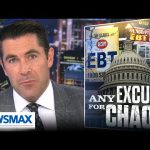On October 29, 2025, the Federal Reserve finally trimmed its benchmark rate by 25 basis points, lowering the fed funds range to 3.75 to 4.00 percent — the second cut of the year after a similar move in September 2025. For hardworking Americans who carry mortgages, car loans, and small-business lines of credit, any relief from sky-high borrowing costs is welcome. Yet relief without clear leadership can turn to confusion fast, and that’s exactly what markets got when Chair Jerome Powell undercut expectations by saying a December cut is “not a foregone conclusion.”
Powell’s awkward hedging exposed something conservatives have warned about for years: a central bank that talks in riddles destroys certainty and punishes Main Street. The Fed’s messaging was split, with at least two officials publicly dissenting and some pushing for deeper easing while others urged patience. That sort of internal bickering should not be happening in public view; it leaves ordinary Americans and investors guessing whether the bank is managing the economy or managing headlines.
There is a broader context here that the mainstream press won’t fully admit: the economy is on uneven footing. Inflation remains stubborn in parts of the economy while the job market is loosening, and a prolonged government shutdown has made vital economic data unreliable. When regulators can’t even rely on the government’s own numbers, monetary policy becomes guesswork — which is why the Fed ought to act with humility, transparency, and an unmistakable bias toward growth.
Conservatives should also call out the mixed incentives at work. The White House’s desire for lower rates and the Fed’s institutional caution collide in a way that rewards political theater over clear policy. If the Fed is to retain the public’s trust it must stop appearing responsive to polls and start being predictable about its rules and endpoints. Markets don’t need drama; they need a steady hand aimed at full employment and stable prices, not an unelected body engaged in political posturing.
Meanwhile, the cut already delivered is a reminder that lower rates can help the economy if paired with sensible fiscal stewardship. What the Fed does not control — Congress does. If Washington wants real, lasting relief for American families it should slash needless regulation, reopen the government, and get out of the way of entrepreneurs. Monetary easing without structural reforms is like pouring water on a cracked foundation; it temporarily soothes but does not fix the rot.
It’s also worth noting who pays the price when the Fed dithers: savers, retirees, and low-income households who rely on predictable returns and stable prices. We conservatives have long argued that monetary policy should protect the American saver as much as it does the speculator. If the Fed truly cares about Main Street it will factor in the human cost of uncertainty and act with purpose rather than performative ambiguity.
The bottom line is simple: Americans deserve a Fed that is clear, accountable, and committed to growth. This October cut was the right move in the moment, but Powell’s refusal to commit to a clear path forward left markets and families with a nagging question — who, exactly, is running the economy? Until policymakers stop treating rate changes like a guessing game and start putting working Americans first, patriotism and common sense demand that voters hold them to account.




